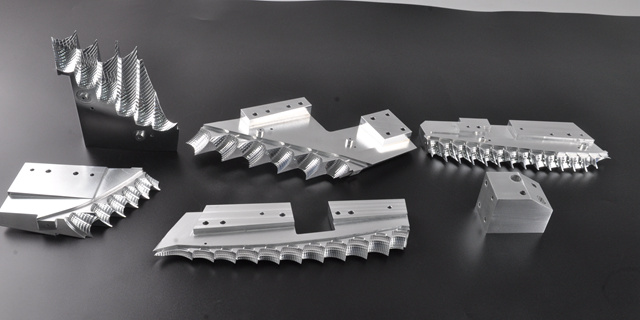Posted on: Apr 19, 2018, | By Tony, WayKen Project Manager
Automotive development is one typical example in which small initial quantities are needed for validation procedures. This critical demand is no doubt great challenges for parts manufacturers. When clients come to order a few dozen pieces, it’s often hard to respond, which is why auto suppliers frequently have to turn to custom machined solutions. Traditional, long-lived standard tools are expensive and are generally not viable for small batch production situations that require only low-volume demands. Professional rapid prototyping companies tend to be the fastest to understand the needs of designers and provide customized aluminum machining services to meet the needs of small quantities or even a single part.
Among all the rapid prototype projects I know in the lighting system, the aluminium reflector is one of the most challenge works which only most experienced prototype manufacturer can make the optic designer satisfied. It is self-evident that the reflector is an appearance part of a headlamp, which not only plays an optical role but also has a key influence on the appearance of the lamp. We impressed by charming light of the headlights of BMW and Audi, and the light of the taillights, the reflective part is the reflector. An aluminium reflector which mainly used in the high-end automotive prototyping, product designers in particular hope that prototype manufacturers will be able to fully understand all the tiny details they concerned.
1. What is the Best Process to Produce an Aluminium Reflector Prototype?
For auto parts, rapid prototyping manufacturers often offer a variety of processing options for different needs. Things like 3D printing (additive manufacturing), Urethane casting(silicone moulds), RIM and rapid tooling.
Good surface roughness is often required, generally lower than Ra0.2μm and needs to be mirror gloss. The normal SLS and other rapid prototyping processes cannot meet the surface quality requirements. Besides, as an important optical component, the accuracy requirement is controlled within or below 0.05mm. Therefore for machining aluminium reflector, CNC milling is the best option, its advantage is embodied in machining the parts with high precision, and the surface of CNC milled parts is high quality.
However, due to the complex structure of the reflector, it is necessary to use the 5-axis CNC machining to complete the production. For some assembly structures on the backside, auxiliary machining like EDM is also needed to help clear the corners.
2. Choice of Material
In the prototype production of automotive lighting parts, the most commonly used aluminium alloys are 2024、5052、6061 and 7075.
For parts like a heatsink, we can simply choose Al-6061-T6 as machining material is easy to process. But for the reflector which has a mirror gloss surface requirement, we usually use Al 7075-T6 which is widely used in automotive industry and aircraft including wings and headlamp reflector. The material hardness is higher which means it will take more process time, the advantage is the final surface can achieve mirror shiny.
3. Machining Process
3.1 CNC milling
3.2 EDM
Due to the complicated structure of the lamp, there are many details even high-precision 5-axis CNC can’t process the whole part all at once. CNC programming engineers, who have rich experience in prototype lamp manufacturing, need to analyze the feasibility of machining after obtaining the drawings of the lamp design. For reflectors, the critical optic surfaces will be milled by CNC process, but on the rear side, there are important assemble structure difficult to be machined by CNC milling since it will leave a large radius on the corners. Therefore, technicians need to make copper electrode and utilize EDM as an auxiliary machining process to help clear the corners. Usually, this process will take a lot of time.
3.3 Post finish
In the later stage of prototype production, deburring, polishing, plating, and other handmade post-processing work is particularly important, will directly determine the final appearance.
Usually, the reflector required to be mirror gloss, there is two methods to achieve this requirement. One is manual polish, after polished, the surface can be mirror gloss, but should be very careful when polish the optical surfaces since some optics need to keep the sharp edges and the polish process maybe leaves radius on the edges.
Another method is by plating, nice milling finish and no impurities are very important before plating, the final surfaces can be very bright and beautiful.





